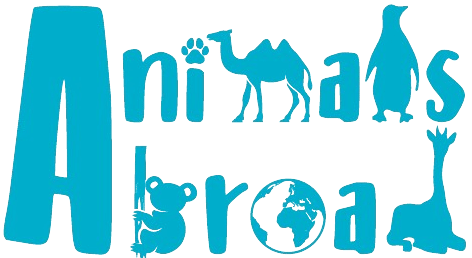Etosha National Park is one of the best game-viewing parks in Namibia. Covering over 22,000 square kilometres, it’s worth booking at least three nights to explore the different areas.
While there, we stayed at Okaukuejo, Halali, and Namutoni campsites. Each morning, we’d pack up and slowly drive to the next campsite, scanning the terrain for wildlife along the way.
Curious about our three days in Etosha? Learn More: Etosha NP with Kids: A Family Safari to Remember

Camping in Etosha National Park
Okaukuejo/Halali/Namutoni campgrounds are like other NWR campgrounds: full of amenities but busy and cramped, offering little to no privacy. Shared kitchens and ablution facilities were available. Halali had the best showers with hot water. Power was available on-site. Wi-Fi was available for a fee. For those concerned about wildlife, the campgrounds were fence. Additional park fees apply.
But the real reason you want to stay in the campgrounds within the park is access to lit watering holes, where, during the dry season, animals gather to cool off and drink. Dawn and dusk are prime times for game sightings, and we had some of our best encounters during these hours.
Okaukuejo Campground
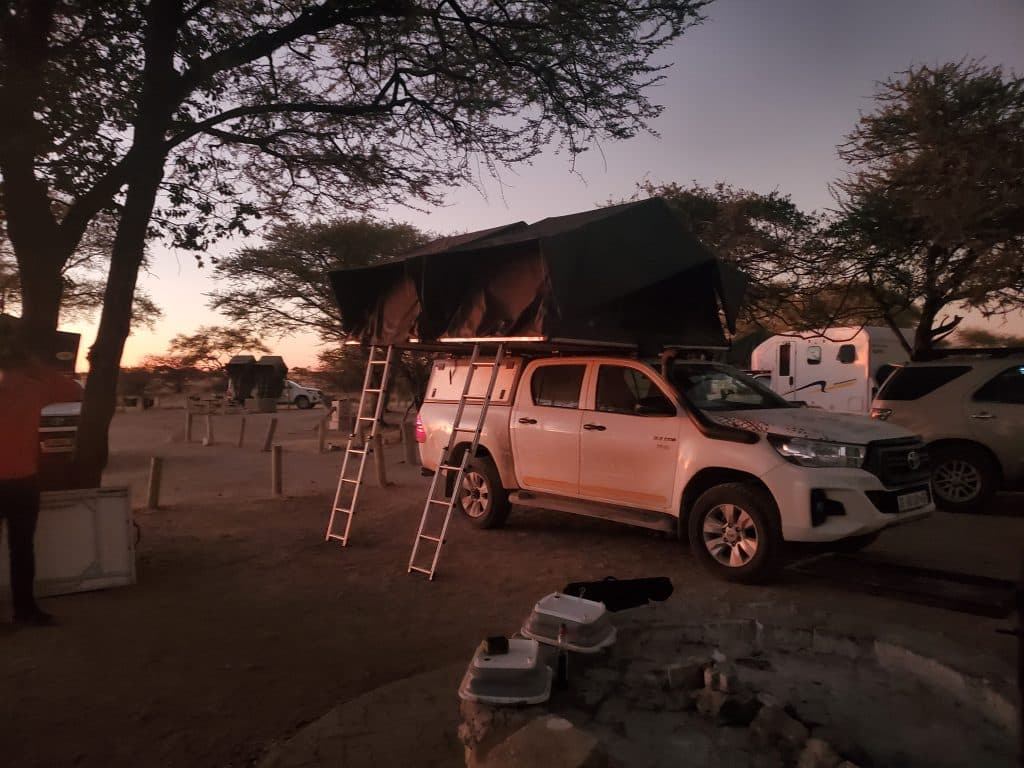
Okaukuejo Waterhole was by far the best for proximity to the animals and sightings. It’s a must-visit if you’re in the area.
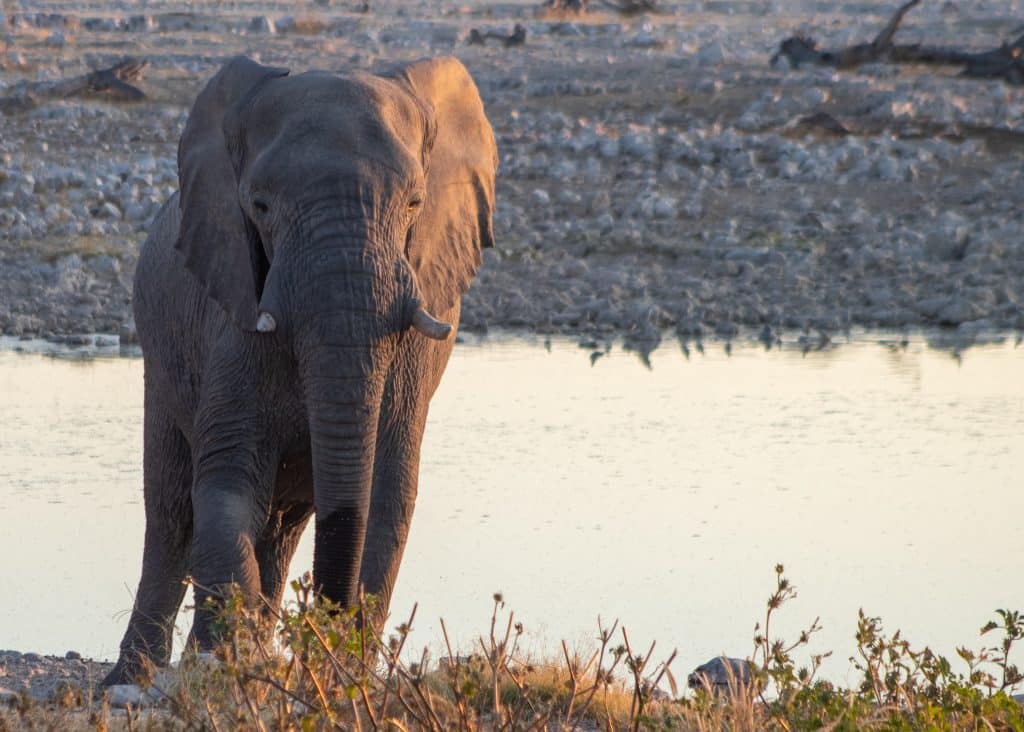
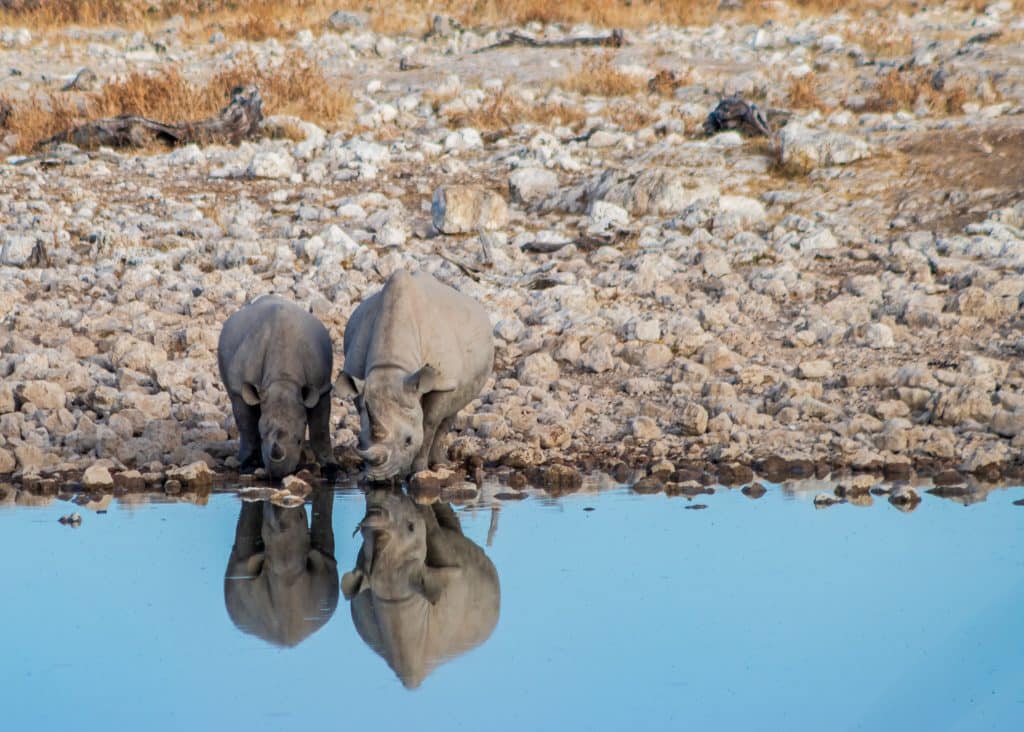
Halali Campground
Halali’s Waterhole also offered great viewing opportunities. The seating area was rustic, with large boulders carved into seating and trees supporting a covered patio.
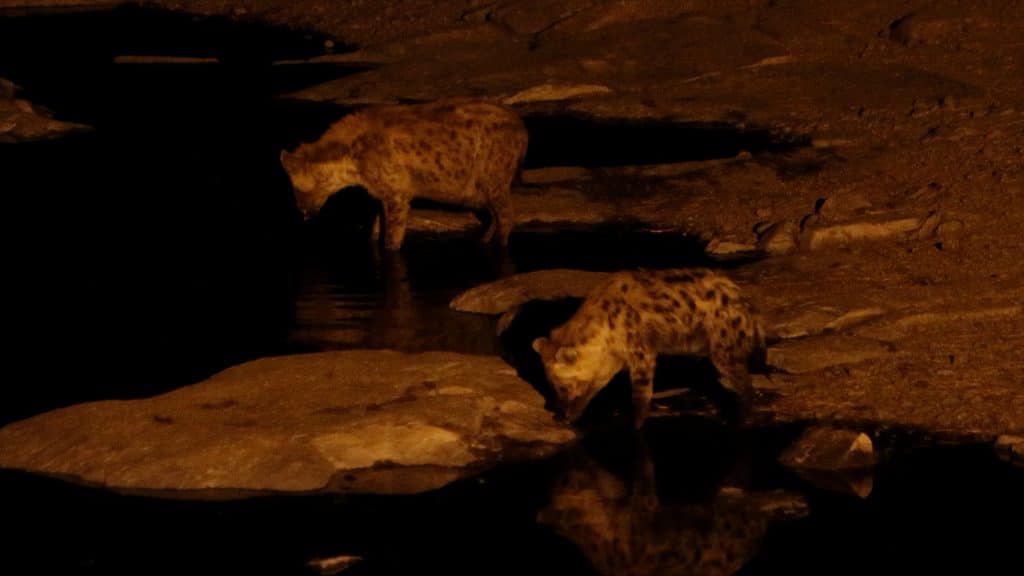
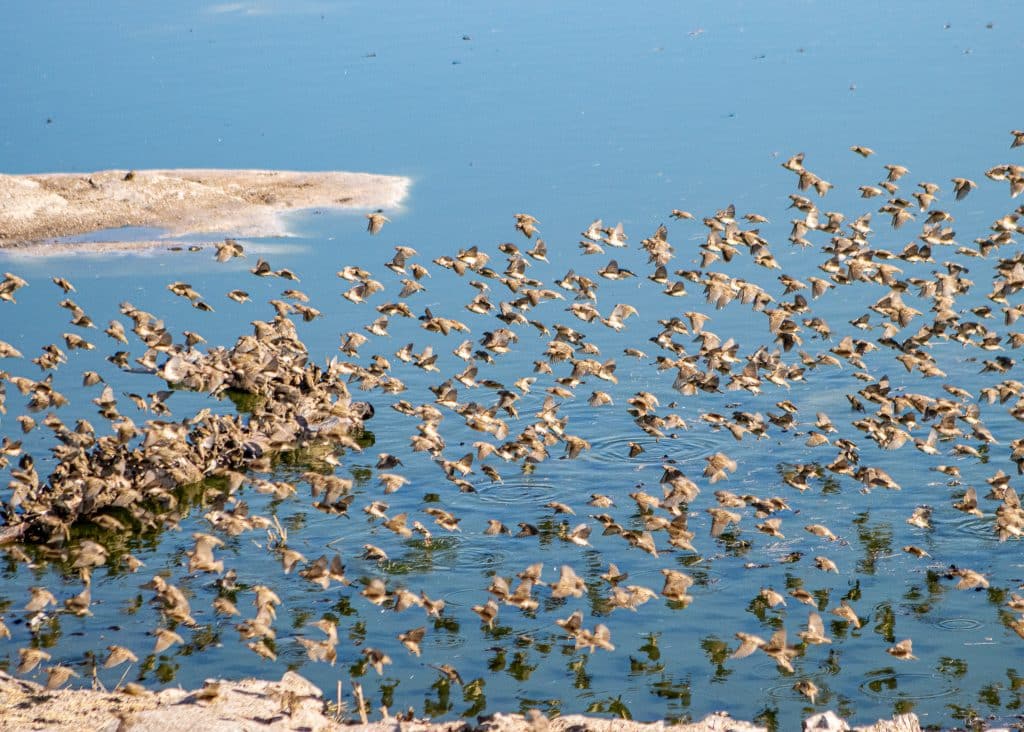
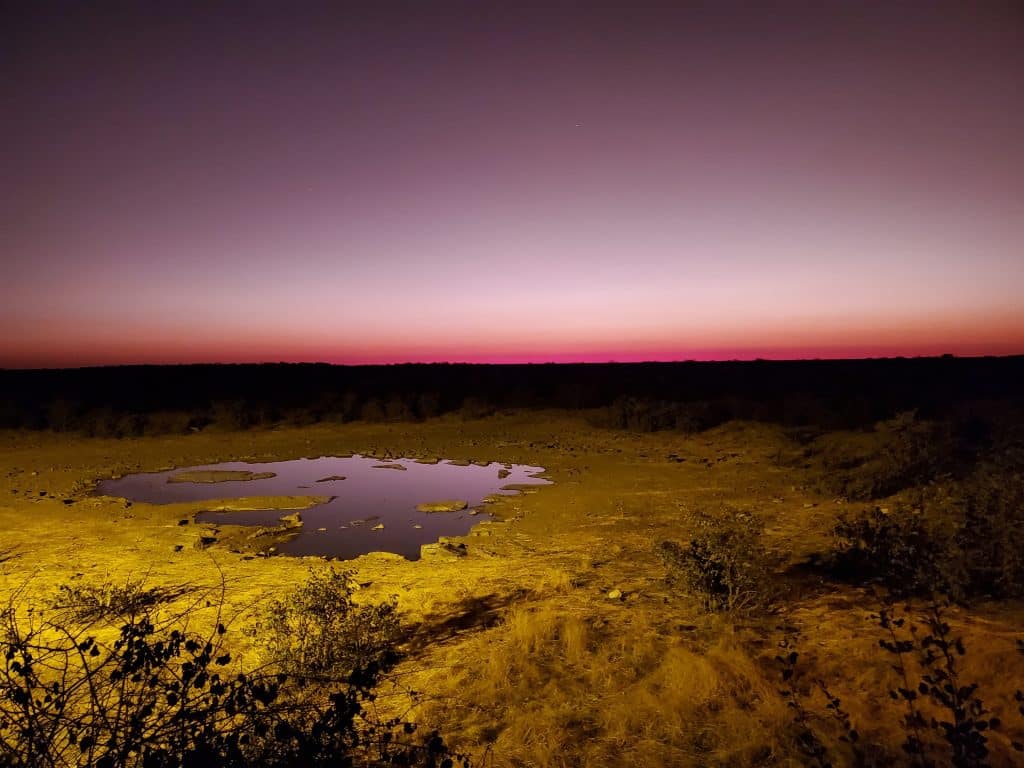
Namutoni Campground
Namutoni welcomed us with a curious gang of banded mongooses. Dozens of them zipped under the truck and darted around the campsite, digging for bugs and generally causing an amusing ruckus. They didn’t come too close and scattered with a loud clap—but it was an unexpectedly warm welcome.
Namutoni’s Waterhole was disappointing. The pond was set so far from the viewing area that it was challenging to identify animals without binoculars.
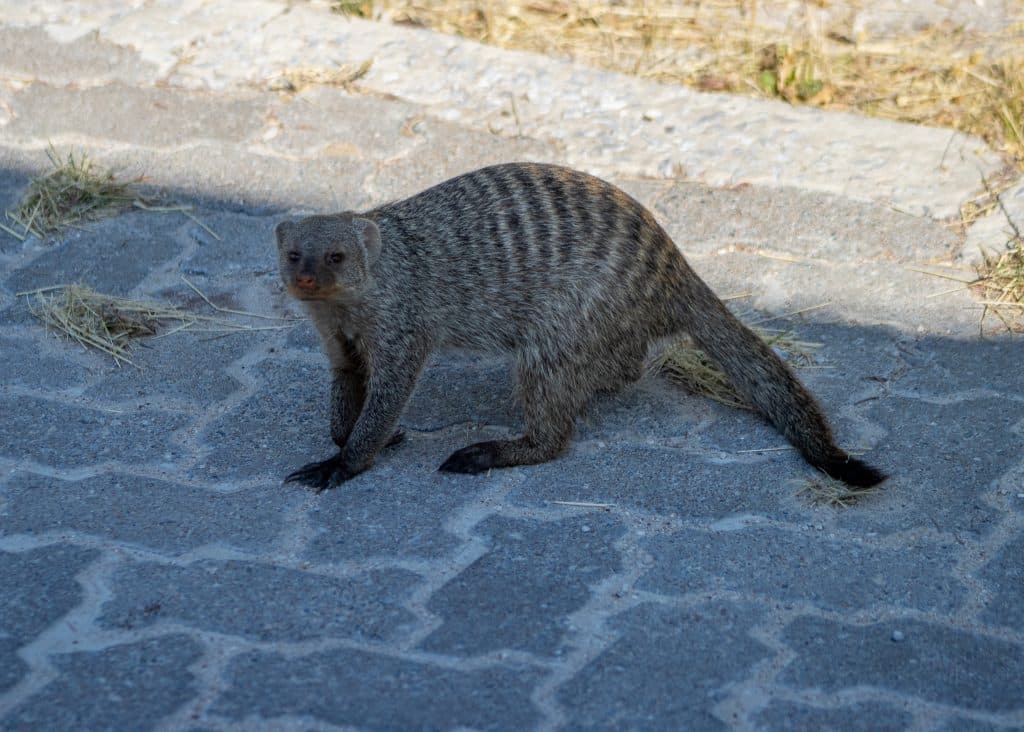
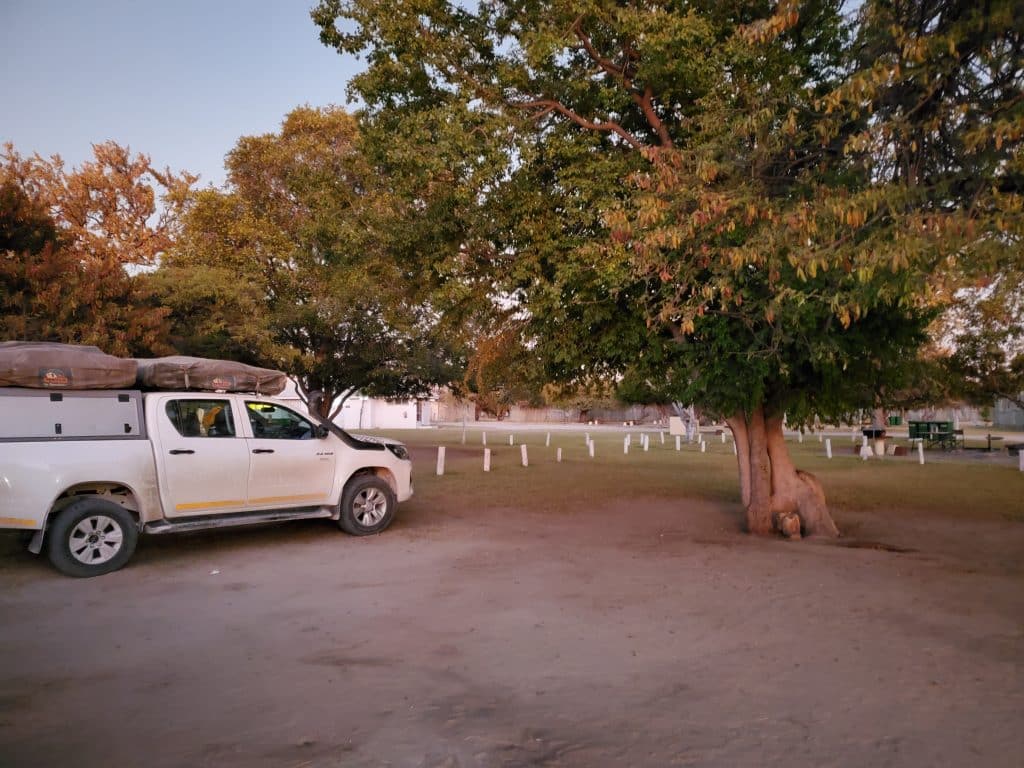
Ready to Start Planning Your Safari Adventure?
Check out these related posts to help plan your trip:
- 51-Day Africa Safari – Part 1: South Africa & Namibia’s Coast
- 51-Day Africa Safari – Part 2: Namibia’s Etosha & Caprivi Strip
- 51-Day Africa Safari – Part 3: Victoria Falls & Botswana
- Our Best and Worst Day on Safari
- Camping Safari in Africa: Know Before You Go
- Camping Across Southern Africa: A Rundown of our Safari Campsites
- Navigating Border Crossings in Southern Africa
- Safari with Kids: Tips from the Road
- Etosha NP with Kids: A Family Safari to Remember
- Exploring the Caprivi Strip with Kids
- Okonjima Family Safari: Where the Wild Things Wait
- The Smoke that Thunders: A Trip to Victoria Falls
- Into the Wild: Chobe NP with Kids
- Sunset Cruise on the Chobe River: A Photo Journey
- Living Giants: A Photo Journey Through Nxai Pan National Park
